295. By counting a
fortnight ahead from the landing site
Hanga Te Pau ("June 10) - corresponding
to the place of St John's day at the time of Julius
Caesar - we should arrive at the end of
Father Light (Jus
Piter → Jupiter) in Roman
times. Te Maro 10 (161) + 14 = 175
('June 24):
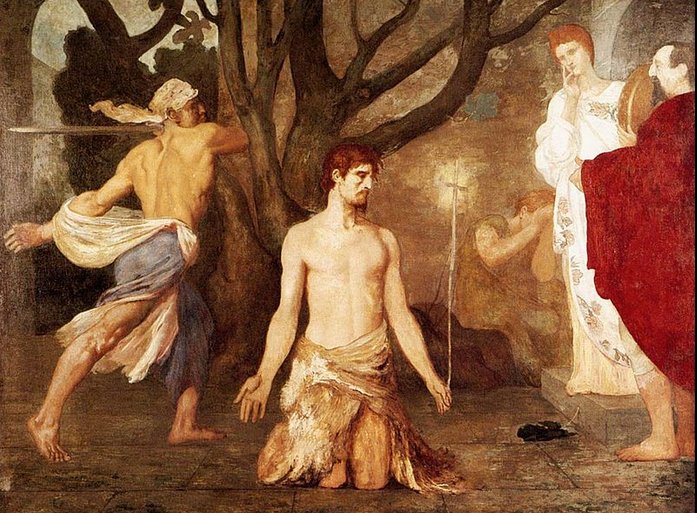
|
MAY 14 |
15 (365 + 135 = 500) |
16 (136 = 288 - 152) |
17 |
18 (*58) |
19 |
 |
 |
 |
 |
 |
 |
|
Ga2-24 |
Ga2-25 |
Ga2-26 |
Ga2-27 → π |
Ga2-28 (58) |
Ga2-29 |
|
Φ
Gemini (118.4) |
DRUS = χ Carinae
(119.9) |
ω Cancri (120.2) |
8h (121.7)
χ Gemini (121.0),
NAOS = ζ Puppis
(121.3) |
ρ Puppis
(122.0),
HEAP OF FUEL = μ Cancri
(122.1), ζ Monocerotis (122.3),
ψ Cancri
(122.6),
REGOR (the astronaut Roger
mirrored) = γ Velorum
(122.7) |
TEGMINE = ζ Cancri
(123.3) |
|
July 17 (*236 / 2) |
18 |
19 (200) |
20 (*121 = 11 * 11) |
21 |
22 / 7 → π |
|
°July 13 |
14 |
15 (196) |
16 |
17 (*118 = *472 / 4) |
18 |
|
'June 20 |
SOLSTICE |
22 (173) |
23 |
ST JOHN'S DAY |
25 (*96) |
|
157 - 80 = *77 = *118.4 -
*41.4 |
"June 7 (158) |
8 |
9 |
Te Maro 10
Hanga Te Pau
ko te Tomonga (Landing Site)
o Ira. |
11 |
|
... Midsummer is the
flowering season of the oak,
which is the tree of
endurance and triumph, and
like the ash is said to
'court the lightning flash'.
Its roots are believed to
extend as deep underground
as its branches rise in the
air - Virgil mentions this -
which makes it emblematic of
a god whose law runs both in
Heaven and in the Underworld
... The month, which takes
its name from Juppiter the
oak-god, begins on June 10th
and ends of July 7th. Midway
comes St. John's Day, June
24th, the day on which the
oak-king was sacrificially
burned alive. The Celtic
year was divided into two
halves with the second half
beginning in July,
apparently after a seven-day
wake, or funeral feast, in
the oak-king's honour ... |
|
CLOSE TO THE FULL MOON: |
|
NOV 13 |
14 |
15 |
16 (*240) |
17 |
18 (322) |
|
ι Sagittarii (301.2),
TEREBELLUM = ω Sagittarii,
ξ Aquilae (301.3),
ALSHAIN = β Aquilae
(301.6), φ Aquilae (301.8) |
ε Pavonis, θ Sagittarii
(302.3), γ Sagittae (302.5),
μ Pavonis (302.7) |
τ Aquilae (303.8) |
20h (304.4)
η Sagittae (304.2), δ
Pavonis (304.4) |
SHANG WEI (Higher Guard) = κ
Cephei (305.2), θ
Sagittae (305.4),
TSEEN FOO (Heavenly Raft)
= θ Aquilae (Ant.)
(305.6), ξ Capricorni
(305.8) |
TSO
KE (Left Flag) = ρ Aquilae
(306.3) |
|
Jan 16 |
17 |
18 (383) |
19 |
20 |
21 |
|
°Jan 12 |
13 (378) |
14 |
15 (*300) |
16 |
17 |
|
'Dec 20 (354) |
SOLSTICE |
22 |
23 |
CHRISTMAS EVE |
25 (*279) |
|
"Dec 6 (340)
|
7 |
8 |
9 (7 * 7 * 7) |
10 (*264) |
11 |
|
... That the Sun-gods
Dionysus, Apollo and Mithras
were all also reputedly born
at the Winter solstice is
well known, and the
Christian Church first fixed
the Nativity feast of Jesus
Christ at the same season,
in the year AD
273 (= 3 *
91).
St. Chrysostom, a century
later, said that the
intention was that 'while
the heathen were busied with
their profane rites the
Christians might perform
their holy ones without
disturbance', but justified
the date as suitable for one
who was 'the Sun of
Righteousness' ... |
Since the precessional distance from Roman
times down to the time of Bharani was around
*41 - *27 right ascension days - i.e. a
fortnight - the day of St John at the time
of Bharani would be about where the month of
Father Light ended in Roman times - the
death of 'the old fire' being succeeded by
the birth of a new 'fire':
... 'fire' is actually a great circle
reaching from the North Pole of the
celestial sphere to its South Pole
...
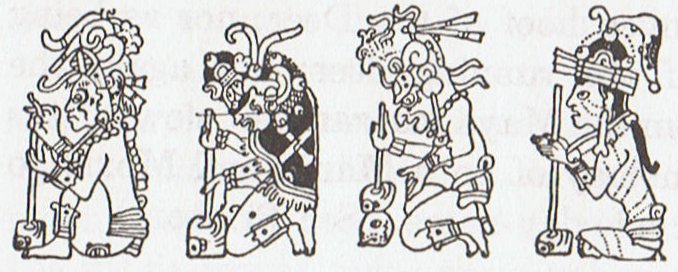
|
MAY 20 (80 + 60) |
21 |
22 |
23 (*63) |
 |
 |
 |
 |
|
Ga3-1 |
Ga3-2
(aaa) |
Ga3-3 |
Ga3-4
(63) |
|
AL TARF (The End) = β Cancri
(124.3)
RAS
ALGETHI (α Herculis)
|
χ Cancri (125.2),
BRIGHT FIRE = λ Cancri
(125.4) |
AVIOR = ε Carinae (126.4),
φ Cancri (126.8)
*85
= (*126.4 - *41.4) |
ο Ursae Majoris
(127.4)
*86
= (*127.4 - *41.4) |
|
July 23 (177 + 27 = 204) |
24 |
25 |
26 (148 + 59) |
|
°July 19 (200 = 177 + 23) |
20 |
21 |
22 |
|
'June 26 (6 * 29½) |
27 |
28 |
29 |
|
"June 12 (163 = 177 - 14) |
13 (*84 = *125.4 - *41.4) |
14
(165 + 365) |
Te Maro 15 (18 * 29½) |
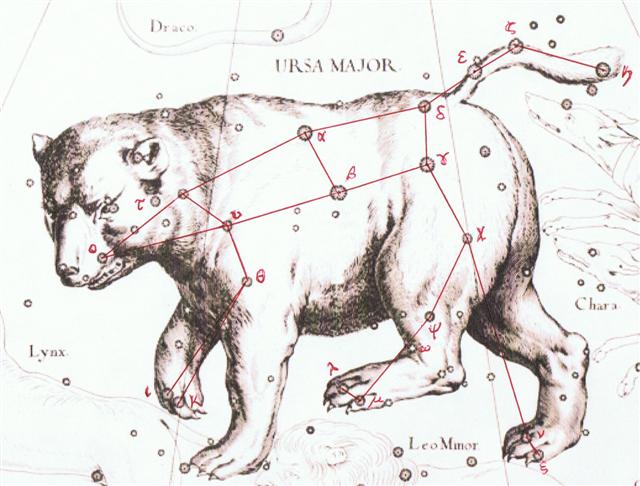
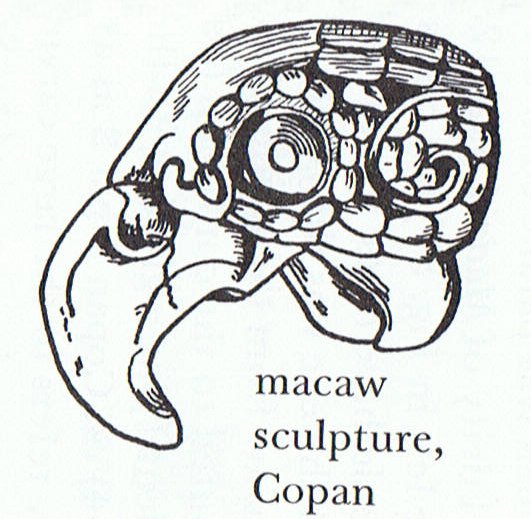
Makoi got up and began to
familiarize himself with the (new)
land. (This took place) on the
fifteenth day of the month of June
('Maro'). He went toward the
sheer face of the rocks (titi o
te opata), was astonished (aaa),
came up to the middle (of the outer
rim of the crater), and stood at the
very edge.
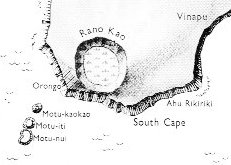
He looked down and saw the 'Pu
Mahore of Hau Maka'
(on the coast) and said, 'There it
is, the hole of the mahore
fish of Hau Maka!' He turned
his face and looked toward the back
(i.e., in the direction of the
crater). No sooner had he seen how
the dark abyss opened up (below
him), when a fragrant breeze came
drifting by. Again Makoi
said, 'This is the dark abyss of
Hau Maka'.
He turned around, walked on in utter
amazement, and arrived at the house.
He spoke to Ira, 'Hey you, my
friends! How forgetful we (truly)
are. This place is adequate (?
tau or 'beautiful'), the dark
abyss lies there peacefully!'
Ira
replied, 'And what should that
remind us of up here?' All arose and
climbed up. They went on and
arrived; they all had a good look
(at the inside of the crater). They
returned home and sat down. Night
fell, and they went to sleep
...
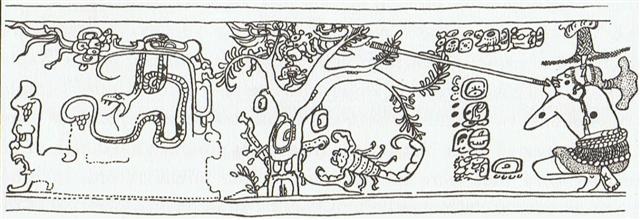
... This mythical bird is
Itzam-Yeh, Classic prototype of
Wuqub-Kaqix, 'Seven-Macaw', of Popol
Vuh fame. In that story, in the time
before the sky was lifted up to make
room for the light, the vainglorious
Seven-Macaw [= Ursa Major]
imagined himself to be the sun.
Offended by his pride, the Hero
Twins humbled him by breaking his
beautiful shining tooth with a
pellet from their blowgun. This pot
shows One-Ahaw aiming at the bird as
he swoops down
to land in his tree. As Itzam-Yeh
lands on his perch, the text
tells us he is 'entering or becoming
the sky'.
... The star which at the time of
Seven-Macaw (the 7 stars of
Ursa Major) had pointed out the
position at the center of the
Whirlpool was Alioth (ε
Ursae Majoris)
... In 3149 BC the stars were
positioned 70 right ascension days
earlier than at the time of
rongorongo. Therefore
η
Andromedae (at Legs, the place of
the Wolf) would have risen with the
Sun in 91 (April 1) - 70 = 21
January (= 32 days after the
solstice). At that time of the year
Alioth would have been close to the
Full Moon in day 21 + 183 = 204 (23
July)
...
... The date in the year 3149 BC,
when the false sun bird Itzam-Yeh
(alias Seven-Macaw) had been
defeated, was 28 May and at the time
of rongorongo the alpha-star of the
Bull (Aldebaran) rose heliacally in
May 28 (148) ... |
... The Chinese renewal of
fire came on the 5th or 6th day after the
solstice, and Dramasa (α Octantis,
88° 57′ S) was positioned in the night of
August 5 (*320 - *183) at Ga3-14 (→ π) ...
|
MAY 29 (514) |
30 |
31 (150 + 366) |
JUNE 1 (152) |
2 |
3 |
4
(*75) |
 |
 |
 |
 |
 |
 |
 |
|
Ga3-10 |
Ga3-11 |
Ga3-12 |
Ga3-13 (72) |
Ga3-14 → π |
Ga3-15 |
Ga3-16 |
|
γ Pyxidis (133.6) |
ζ Hydrae (134.1), ρ Cancri
(134.2), ζ Oct. (134.3), ο
Cancri (134.6), δ Pyxidis
(134.9) |
ACUBENS = α Cancri, TALITHA
BOREALIS = ι Ursae Majoris
(135.0), σ Cancri (135.2), ρ
Ursa Majoris (135.6) |
ν Cancri (136.0),
TALITHA AUSTRALIS = κ Ursae
Majoris
(136.1), ω Hydrae (136.8) |
9h (137.0)
σ¹ Ursa Majoris (137.0), κ
Cancri (137.3),
τ Cancri (137.4),
ALSUHAIL AL WAZN (of the weight)
= λ Velorum
(137.5), σ² Ursa Majoris
(137.6), τ Ursa Majoris (137.7),
ξ Cancri (137.8) |
κ Pyxidis (138.0), ε Pyxidis
(138.5) |
π Cancri (139.2),
MIAPLACIDUS = β Carinae
(139.3),
TUREIS = ι Carinae
(139.8) |
|
Aug 1 |
2 (214) |
3 (*500) |
4
(*136) |
5 |
6 |
7 |
|
°July 28 |
29 (*130) |
30 |
31 |
°Aug 1 |
2 (214) |
3 |
|
'July 5 |
6 |
7 (*108) |
8 |
9 (190 = 176 + 14) |
10 |
11 |
|
SOLSTICE |
"June 22 (*93) |
23 |
ST JOHN'S DAY |
(*137.4
- *41.4) |
26 (177) |
27 |
|

... At the beginning of 44 B.C.
- when Ceasar was still alive -
the Senate decided to raise
statues of him in all the
temples and to sacrifice to him
on his birthday in the month
Quintilis, which in honour
of him was renamed July. He was
raised to the status of a god
(among the other gods of the
state) under the name Jupiter
Julius. Marcus Antonius, who
this year was consul together
with Ceasar, became high priest
and responsible for the
ceremonies. In the middle of
February, at the time of the old
feast of Lupercalia [cfr
Lupus = Wolf], he ran
around naked and whipped the
Roman ladies with thongs made
from goat-skin [februa],
in order to promote their
fertility ...
... The brutes of spring caused
the downfall of both Captain
Cook and Julius Caesar. We are
close to the key myth of
mankind, that which explains the
regeneration of sun and of
growth. Once at least some
people kept the tradition
living. I became interested in
what really happened at March 15
and reopened Henrikson to find
out: Caesar had been forewarned
of the threat by the prophet
Spurinna, who told him that a
great threat was coming at
Idus Martiae or just
before [i.e. at 3-14]. The day
arrived and Caesar was still
living, walking to his meeting
with the Senate when he happened
to encounter Spurinna and told
him jokingly that he was still
alive. Spurinna calmely answered
that the day had yet not ended.
The Romans divided their months
in two parts and the dividing
point was Idus, which in
some way was connected with full
moon. March 15 was the midpoint
of March, which is close to
spring equinox. The old
agricultural year defined the
beginning of the year to the
time when sun returned, and it
was connected with Mars
...
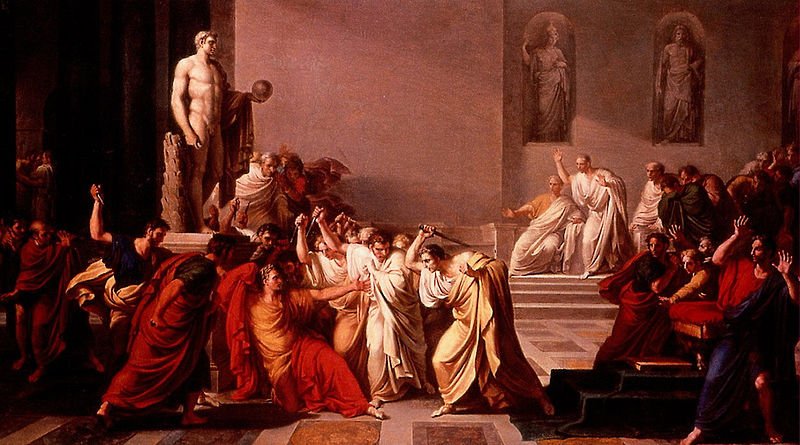 |
|
CLOSE TO THE FULL MOON: |
|
NOV 28 |
29 |
30 (*254) |
DEC 1 |
2 (336 = 4 * 84) |
3 |
4 |
|
μ
Aquarii (316.0) |
ε
Equulei (317.8) |
no
star listed (318) |
21h (319.6)
ARMUS = η Capricorni
(319.0),
DORSUM = θ Capricorni
(319.3),
TSOO = 24 Capricorni
(319.7) |
DRAMASA = σ Oct.,
χ Capricorni (320.0), ν Aquarii
(320.3), γ Equulei (320.6), ο
Pavonis (320.8) |
α
Oct. (321.5), δ Equulei (321.7),
φ Capricorni (321.8) |
KITALPHA = α Equulei
(322.0),
ALDERAMIN = α Cephei
(322.9) |
|
Jan 31 |
Febr 1 |
2 (398) |
3 |
4
(*320) |
5 (36) |
6 |
|
°Jan 27 |
28 |
29 (*314) |
30 |
31 (396) |
°Febr 1 |
2 |
|
'Jan 4 |
5 |
6 |
7 (372) |
8 |
9 |
10 (*295) |
|
SOLSTICE |
"Dec 22 |
23 |
CHRISTMAS EVE |
→
25 * 25 - 325 |
26 (360) |
27 |
|
... Beyond the death (sacrifice,
rau hei) of Captain Cook
(Lono) a tribute-canoe of
offerings was set adrift for
Kahiki (Tahiti),
homeland of the gods, and the
first star in Argo Navis (viz.
Canopus, *95) was at the Sun 5
days after this basket / cradle
/ coracle, rising heliacally in
June 24 (80 + *95) = St John's
Day and half a year away from
Christmas Eve.
... Gronw Pebyr, who figures as
the lord of Penllyn - 'Lord of
the Lake' - which was also the
title of Tegid Voel, Cerridwen's
husband, is really Llew's twin
and tanist ... Gronw reigns
during the second half of the
year, after Llew's sacrificial
murder; and the weary stag whom
he kills and flays outside
Llew's castle stands for Llew
himself (a 'stag of seven
fights'). This constant shift in
symbolic values makes the
allegory difficult for the
prose-minded reader to follow,
but to the poet who remembers
the fate of the pastoral
Hercules the sense is clear:
after despatching Llew with the
dart hurled at him from Bryn
Kyvergyr, Gronw flays him, cuts
him to pieces and distributes
the pieces among his merry-men.
The clue is given in the phrase
'baiting his dogs'. Math had
similarly made a stag of his
rival Gilvaethwy, earlier in the
story. It seems likely that
Llew's mediaeval successor,
Red Robin Hood, was also once
worshipped as a stag. His
presence at the Abbot's Bromley
Horn Dance would be difficult to
account for otherwise, and
stag's horn moss is sometimes
called Robin Hood's Hatband. In
May, the stag puts on his red
summer coat. Llew visits the
Castle of Arianrhod in a coracle
of weed and sedge. The coracle
is the same old harvest basket
in which nearly every antique
Sun-god makes his New Year
voyage; and the virgin princess,
his mother, is always waiting to
greet him on the bank ...
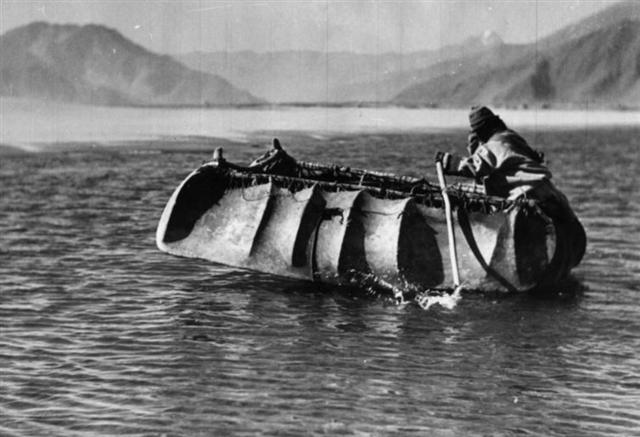 |
Furthermore, the right
ascension distance down from Bharani to
Hyadum II was around *64 - *41 = *23 days, which
implied that the position of "June 24 (175 = 350 / 2) would
at that ancient time have been around day number 175 - 23 = 152 (JUNE
1), i.e. 9 right ascension days after ο
Ursae Majoris:
Here the right front paw of Ursa Major
was raised high:

And this was *95 - *86 =
*11 days after his no(o)se -
where Makoi began to 'familiarize' himself with the new land:
|
Hanga Te Pau
(*80) -
ko te
Tomonga o
Ira. |
|
Te Pu Mahore
(*85) - a
Hau Maka (o
Hiva). |
|
Te Maro 10
(80 + 400 /
5) |
Te
Maro 14 (80
+ 420 / 5) |
 |
 |
 |
 |
 |
|
Ga2-28 |
Ga2-29 |
Ga3-1 (60) |
Ga3-2 |
Ga3-3 |
|
ρ Puppis
(122.0),
HEAP OF FUEL
= μ Cancri
(122.1), ζ
Monocerotis
(122.3),
ψ Cancri
(122.6),
REGOR (the
astronaut
Roger
mirrored) =
γ Velorum
(122.7) |
TEGMINE = ζ
Cancri
(123.3) |
AL TARF (The
End) = β
Cancri
(124.3)
RAS ALGETHI
(α Herculis) |
χ Cancri
(125.2),
BRIGHT FIRE
=
λ Cancri
(125.4)
*84 =
*125.4 -
*41.4 |
AVIOR = ε
Carinae
(126.4),
φ Cancri
(126.8) |
|
July 21
(*122) |
22 / 7 → π |
23 (204) |
24 (*125) |
25 |
|
ST JOHN'S
DAY |
'June 25
(*96) |
26 (177 = 6
* 29½) |
27 (178) |
28 (*126 -
*27) |
|
"June 10
(202 - 41) |
11 |
12 (163) |
14 (164 =
205 - 41) |
15 (206 -
41) |
|
he
nape
mai
a
Makoi.i
te
ingoa.
ko
hanga
te
pau
ko
te
tomonga
o
Ira. |
Makoi
named
the
place
Hanga
Te
Pau,
'the
landing
site
of
Ira'. |
|
he
aringa.ko
mua
a
hanga
te
pau. |
So
that
they
would
remember
(?
he
aringa,
literally,
'as
face'),
the
open
side
of
Hanga
Te
Pau |
|
i
nape
ai
te
ingoa. |
was
given
this
name. |
|
he
ea.a
Ira.he
iri
he
oho
ki
runga
anake. |
Ira
got
up.
They
all
climbed
to
the
top
of
the
hill. |
|
i
te
angahuru
o te
ra o
te
maro
i
iri
ai. |
They
climbed
up
on
the
tenth
day
of
the
month
of
June
'Maro'. |
|
|
Pau.
1. To run
out (food,
water):
ekó pau te
kai, te vai,
is said
when there
is an
abundance of
food or
water, and
there is no
fear of
running out.
Puna pau,
a small
natural well
near the
quarry where
the 'hats' (pukao)
were made;
it was so
called
because only
a little
water could
be drawn
from it
every day
and it ran
dry very
soon. 2.
Va'e pau,
clubfoot.
Paupau:
Curved.
Vanaga.
1.
Hakapau,
to pierce
(cf.
takapau,
to thrust
into). Pau.:
pau,
a cut, a
wound,
bruised,
black and
blue. 2.
Resin. Mq.:
epau,
resin. Ta.:
tepau,
gum, pitch,
resin.
(Paupau)
Hakapaupau,
grimace,
ironry, to
grin. 3.
Paura
(powder),
gunpowder.
4. Pau.:
paupau,
breathless.
Ta.:
paupau,
id. 5. Ta.:
pau,
consumed,
expended.
Sa.: pau,
to come to
an end. Ma.:
pau,
finished. 6.
Ta.: pau,
to wet one
another.
Mq.: pau,
to moisten.
Churchill.
Paua
or
pāua
is the
Māori
name given
to three
species of
large edible
sea snails,
marine
gastropod
molluscs
which belong
to the
family
Haliotidae
(genus
Haliotis),
known in the
USA as
abalone, and
in the UK as
ormer shells
...
Wikipedia |
... And so
they waited
there in the
darkness at
the place
where the
sun rises.
At length
the day
dawned, a
chilly grey
at first,
then flaming
red. And the
sun came up
from his
pit,
suspecting
nothing. His
fire spread
over the
mountains,
and the sea
was all
glittering.
He was
there, the
great sun
himself, to
be seen by
the brothers
more closely
than any man
had ever
seen him. He
rose out of
the pit
until his
head was
through the
noose, and
then his
shoulders.
Then Maui
shouted, and
the ropes
were pulled,
the noose
ran taut
... |
Mahore.
A fish
(small,
silver-coloured).
Vanaga.
Ta.:
mahore,
to peel off.
Sa.:
mafoe,
to be
skinned.
Ma.:
mahore,
to be
peeled.
Churchill.
... The
dream soul
of Hau
Maka
continued
her journey
and went
ashore on
the (actual
Easter)
Island. The
dream soul
saw the fish
Mahore,
who was in a
(water) hole
to spawn
(?), and she
named the
place 'Pu
Mahore A Hau
Maka O
Hiva'
...
... Makoi
got up and
began to
familiarize
himself with
the (new)
land. (This
took place)
on the
fifteenth
day of the
month of
June ('Maro').
He went
toward the sheer
face of the
rocks (titi
o te opata),
was
astonished (aaa),
came up to
the middle
(of the
outer rim of
the crater),
and stood at
the very
edge.
He looked
down and saw
the 'Pu
Mahore
of Hau
Maka'
(on the
coast) and
said, 'There
it is, the
hole of the
mahore
fish of
Hau Maka!' |
... It seems
reasonable to assume the time
difference from the first day of
June (Te Maro) up to and
including the 10th day of June
corresponded to the difference
between the dates Tangaroa Uri 15
and Tangaroa Uri 25, when
the 'double-canoe' (equinox) arrived
respectively the Explorers went home
again to Hiva. But a deeper
explanation could have been
dependent upon the 3 Belt stars in
Orion (Tau-toru):
|
MAY 20 (140) |
21 |
22 |
23 (*63) |
24 (144 = 12 * 12) |
 |
 |
 |
 |
 |
|
Ga3-1 (60) |
Ga3-2 |
Ga3-3 |
Ga3-4 |
Ga3-5 |
|
AL TARF (The End) = β
Cancri
(124.3)
RAS ALGETHI (α Herculis)
|
χ Cancri
(125.2),
BRIGHT FIRE
=
λ Cancri (125.4)
*84 = *125.4 - *41.4 |
AVIOR = ε Carinae
(126.4),
φ Cancri
(126.8)
*85 = *126.4 - *41.4 |
ο Ursa Majoris
(127.4)
*86 = *127.4 - *41.4 |
Pushya-8 (Nourisher)
υ Cancri (128.1),
θ Cancri
(128.2) |
|
July 23 (204) |
24 (*125) |
25 |
26 |
27 (208) |
|
°July 19 (200) |
20 (*121) |
21 |
22 / 7 |
23 (204) |
|
26 (177 = 6 * 29½) |
'June 27 |
28 |
29 (*100) |
Sirius |
|
"June 12 |
13 (*84) |
14 (165 + 365) |
Te
Maro 15 (18 * 29½) |
16 |
|
CLOSE TO THE FULL MOON |
|
NOV 19 |
20 |
21 (325) |
23 (*246 = 6 * 41) |
23 |
|
GREDI = α Capricorni
(307.2), σ Capricorni
(307.5),
ALSHAT (The Sheep) =
ν Capricorni
(307.9) |
Al Sa’d al
Dhabih-20 (Lucky One of
the Slaughterers) /
Ox / Herd Boy-9
(Buffalo)
DABIH = β Capricorni
(308.0), κ Sagittarii
(308.1),
SADIR (Hen's Breast)
= γ Cygni
(308.4),
PEACOCK = α Pavonis
(308.7) |
KHUFU
MINTAKA (δ Orionis)
OKUL = π Capricorni
(309.6),
BOS = ρ Capricorni
(309.9)
ARNEB (α Leporis)
|
KHAFRE
ALNILAM (ε Orionis)
ο Capricorni (310.2), θ
Cephei (310.5)
HEKA (λ Orionis)
|
MENKAURE
ALNILAK (ζ Orionis)
ROTTEN MELON = ε
Delphini,
φ Pavonis (311.2), η
Delphini (311.4), ζ
Delphini, ρ Pavonis
(311.7)
PHAKT (α Columbae)
|
|
Jan 22 |
23 |
24 (*309) |
25 (390) |
26 |
|
°Jan 18 (384) |
19 |
20 |
21 (*306) |
22 |
|
'Dec 26 (360) |
27 |
28 |
29 |
30 (*284) |
|
"Dec 12 |
13 |
14 (348) |
15 |
16 (*270) |
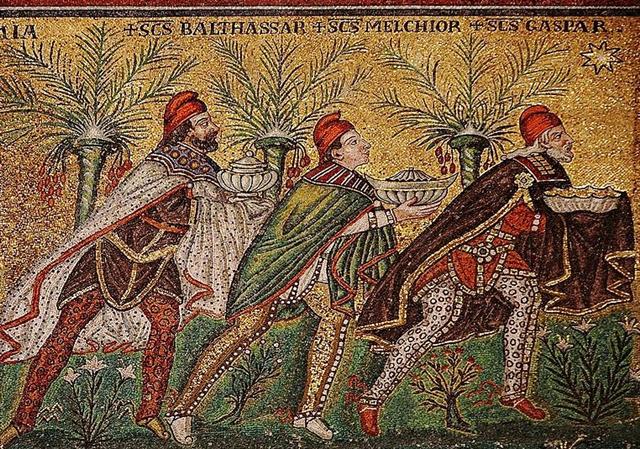 |
|
Last 4 of the first 7
places named by Makoi:
Possibly
these places were
alluding also to the
change from the Julian
spring equinox to the
Gregorian spring
equinox:
... When the Pope
rearranged the day for
spring equinox from
number 84 ('March 25) to
number 80 (ºMarch 21)
the earlier Julian
structure was buried,
was covered up (puo).
At the same time the
Pope deliberately
avoided to correct the
flow of Julian calendar
days for what he may
have regarded as 4
unneccesary leap days
prior to the Council of
Nicaea. Thus his balance
sheet for days was in
order. The day numbers
counted from the equinox
were increased with 4
and this was equal to
allowing the 4
'unneccessary' leap days
to remain in place. But
he had moved spring
equinox to a position
which was 4 days too
early compared to the
ancient model
...
These '4 unneccessary
leap days' (prior to the
Council of Nicaea) were
equal in number to the
precessional distance in
time between the Pope
and the time of
rongorongo. The
Gregorian calendar could
therefore be easily
understood by the Easter
Islanders. The Pope had
created a 'crooked
calendar' but since his
time the precession had
fixed it
...
 |
|
MAY 25 (5-25) |
26 (*266) |
27 |
28 (348) |
 |
 |
 |
 |
|
Ga3-6 |
Ga3-7 |
Ga3-8 |
Ga3-9 (68) |
|
Āshleshā-9 (Embrace) /
Willow-24 (Stag)
π¹ Ursa Majoris,
δ Hydrae (129.6),
AL MINHAR AL SHUJĀ = σ
Hydrae,
MUSEIDA = π² Ursae
Majoris
(129.9)
RAS ALHAGUE (α Ophiuchi) |
Al Nathrah-6 (Gap)
BEEHIVE (Exhalation of
Piled-up Corpses) = ε
Cancri,
η Pyxidis (130.4),
XESTUS = ο Velorum
(130.5), ζ Pyxidis
(130.7),
ASCELLUS BOREALIS = γ
Cancri,
β Pyxidis (130.9)
*89 = *130.4 - *41.4 |
Extended Net-26a (Ox) /
Arkū-sha-nangaru-sha-shūtu-12
(Southeast Star in the
Crab)
η Hydrae (131.0),
ASCELLUS AUSTRALIS =
δ Cancri
(131.4),
KOO SHE (Bow and Arrow)
= δ Velorum
(131.6),
α Pyxidis
(131.8),
ε Hydrae
(131.9)
*90 = *131.4 - *41.4 |
ι Cancri (132.0),
ρ Hydrae (132.4)
*91 = *132.4 - *41.4 |
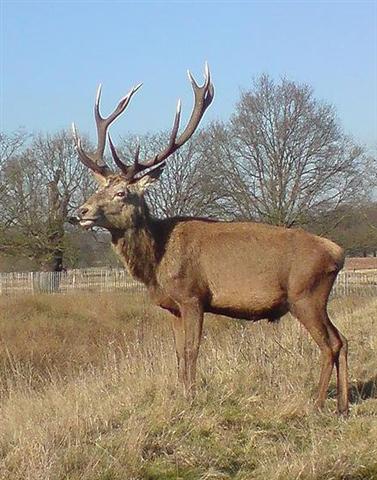
...
A sidelight falls upon
the notions connected
with the stag by
Horapollo's statement
concerning the Egyptian
writing of 'A long space
of time: A Stag's horns
grow out each year. A
picture of them means a
long space of time.'
Chairemon (hieroglyph
no. 15, quoted by
Tzetzes) made it
shorter: 'eniautos:
elaphos'. Louis
Keimer, stressing the
absence of stags in
Egypt, pointed to the
Oryx (Capra Nubiana)
as the appropriate
'ersatz', whose head
was, indeed, used for
writing the word rnp
= year, eventually in
'the Lord of the Year',
a well-known title of
Ptah. Rare as this modus
of writing the word
seems to have been - the
Wörterbuch der
Aegyptischen Sprache
(eds. Erman and Grapow),
vol. 2, pp. 429-33, does
not even mention this
variant - it is worth
considering (as in every
subject dealt with by
Keimer), the more so as
Chairemon continues his
list by offering as
number 16: 'eniautos:
phoinix', i.e., a
different span of time,
the much-discussed
'Phoenix-period' (ca.
500 years)
... |
|
July 28 |
29 (*130) |
30 |
31 (212) |
|
°July 24 |
25 |
26 (*127) |
27 (208) |
|
'July 1 |
2 |
3 (*104) |
4
(185) |
|
"June 17
Te Kioe Uri |
18
Te
Piringa Aniva |
19 (*90)
Te Pei |
Te Maro 20 (171 = 185 -
14)
Te Pou |
|
CLOSE TO THE FULL MOON: |
|
NOV 24 |
25 (*249) |
26 |
27 (331) |
|
ROTANEV = β Delphini,
ι Delphini (312.3), τ
Capricorni (312.6), κ
Delphini (312.7),
SVALOCIN = α Delphini,
υ Capricorni, υ Pavonis
(312.8) |
μ², μ¹ Oct. (313.2),
DENEB CYGNI (Tail of the
Swan) = α Cygni
(313.5), β Pavonis
(313.6), δ Delphini
(313.8) |
Al Sa’d al Bula'-21
(Good Fortune of the
Swallower) /
Dhanishta-24 (Most
Famous) /
Girl-10 (Bat)
YUE (Battle-Axe) = ψ
Capricorni
(314.3),
GIENAH CYGNI = ε
Cygni, η
Cephei (314.5), γ
Delphini (314.6), σ
Pavonis (314.7),
ALBALI = ε Aquarii
(314.8) |
BATEN ALGIEDI (Belly of
the Goat) = ω Capricorni
(315.8) |
|
Jan 27 |
28 (393) |
29 (*314) |
30 |
|
°Jan 23 |
24 |
25 (*310) |
26 |
|
'Dec 31 |
'Jan 1 |
2 |
3
(*288) |
|
"Dec 17 |
18 |
19 (*273) |
20 (354) |
|
When it
grew light, Makoi
arose again. He went off
to further explore the
area. He went along and
came to the 'dark rat'.
He looked around and
said: 'Here we are at
the dark rat of Hau
Maka'. He gave it
the name Te Kioe Uri
A Hau Maka. He went
on and came to Te
Piringa Aniva. When
he arrived there, he
looked around and gave
the name Te Piringa
Aniva. He went on
and came to Te Pei,
looked around, and said,
'Here it is!' So he gave
the name Te Pei A Hau
Maka. He went on,
all alone he went on,
and came to Te Pou.
When he arrived there,
he looked around and
again said, 'Here it
is!' and gave the name
Te Pou A Hau Maka. |
|
For some
reason nothing was said
about Te Manavai,
which in the journey of
the kuhane came
between Poko Uri
and Te Kioe Uri.
... The dream soul
climbed up and
reached the rim of
the crater. As soon
as the dream soul
looked into the
crater, she felt a
gentle breeze coming
toward her. She
named the place 'Poko
Uri A Hau Maka O
Hiva'. The
dream soul continued
her search for a
residence for King
Matua.
The dream soul of
Hau Maka reached
(the smaller crater)
Manavai and
named the place 'Te
Manavai A Hau Maka O
Hiva'. The
dream soul went on
and reached Te
Kioe Uri. She
named the place 'Te
Kioe Uri A Hau Maka
O Hiva' ...
...
Manavai
Hollow
where rainwater
accumulates; anciently,
small, round gardens,
preferably situated in
low shady spots, where
the mahute tree
was grown. Vanaga. 1.
Brain. 2. Valley,
ravine, river, torrent,
brook; manavai miro,
orchard, Mq.: manavai,
valley,
brook.
Ta.: anavai,
river, brook. It
scarcely appears that
these are fully
coordinate. In Tahiti
anavai has a clear
etymology, ana
meaning
the bed of a stream. In
Rapanui and in the
Marquesas mana
most readily associates
with maga, as
water in a forked bed.
Churchill
...
However,
Manuscript E seems to
offer an explanation in
the way Makoi
remembered how he
documented the name: ...
I wrote (ta)
Te Manavai A Hau Maka
on the surface of a
banana leaf (kaka),
and this is how I left
it ... |
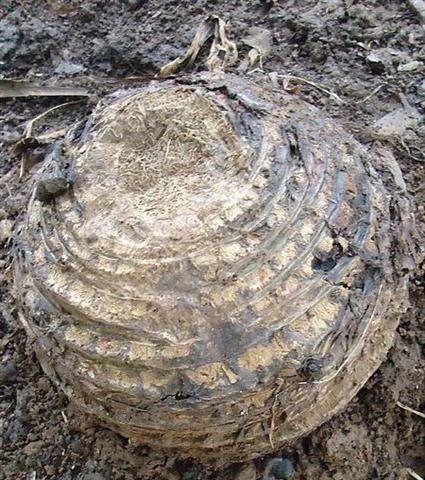
|






















